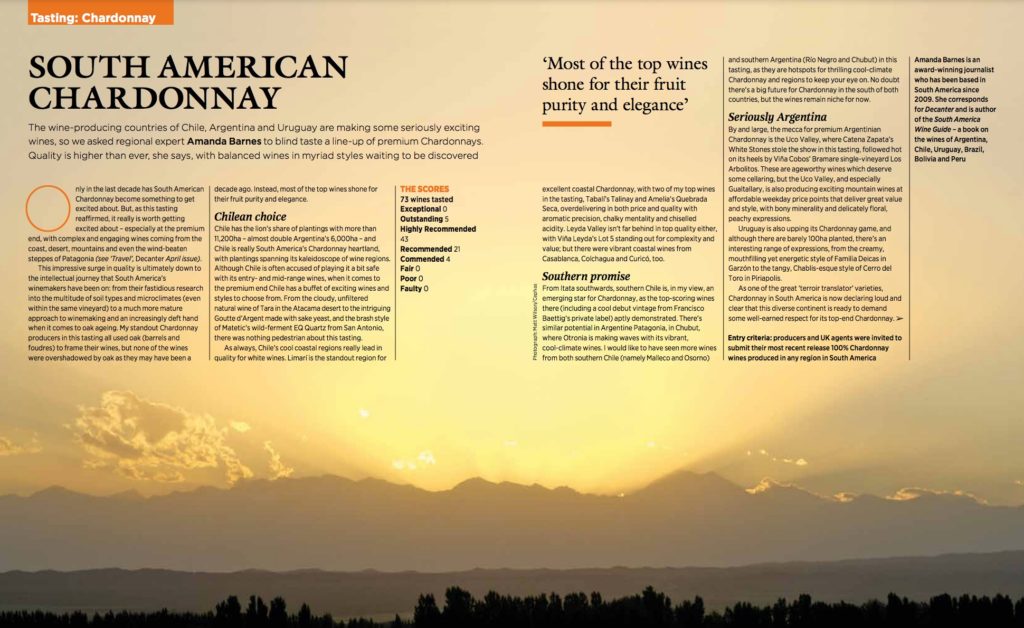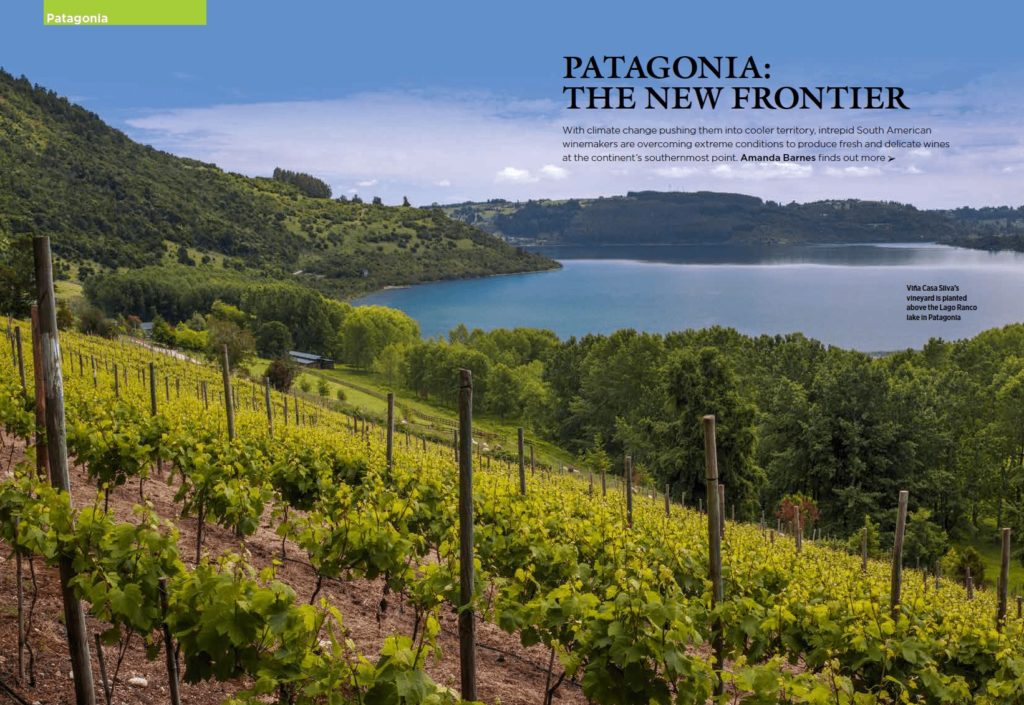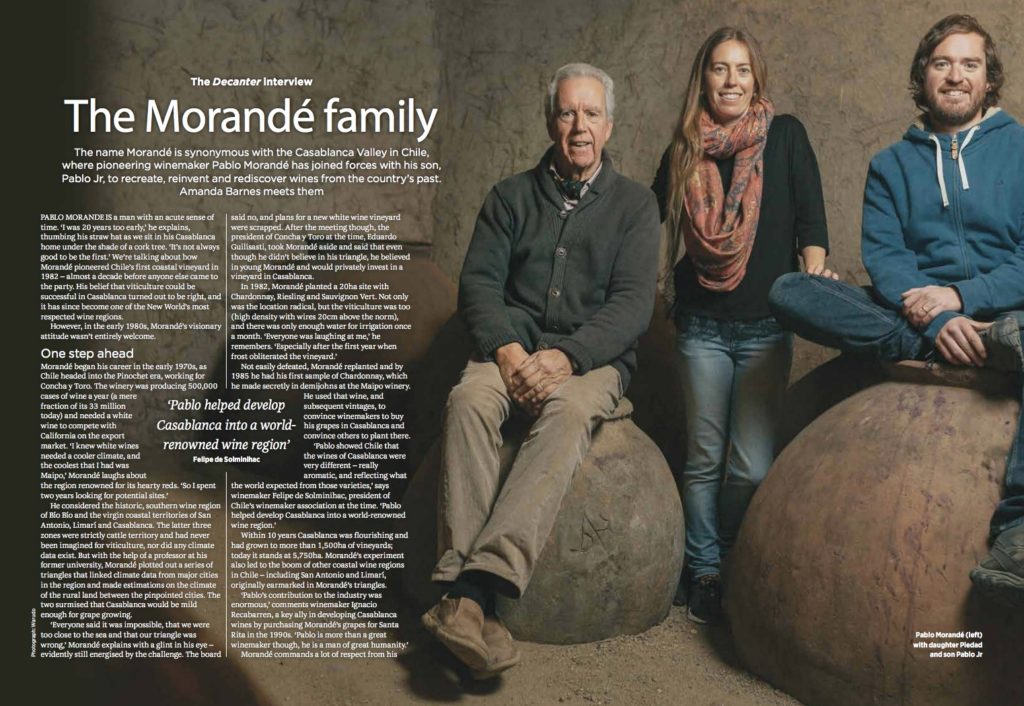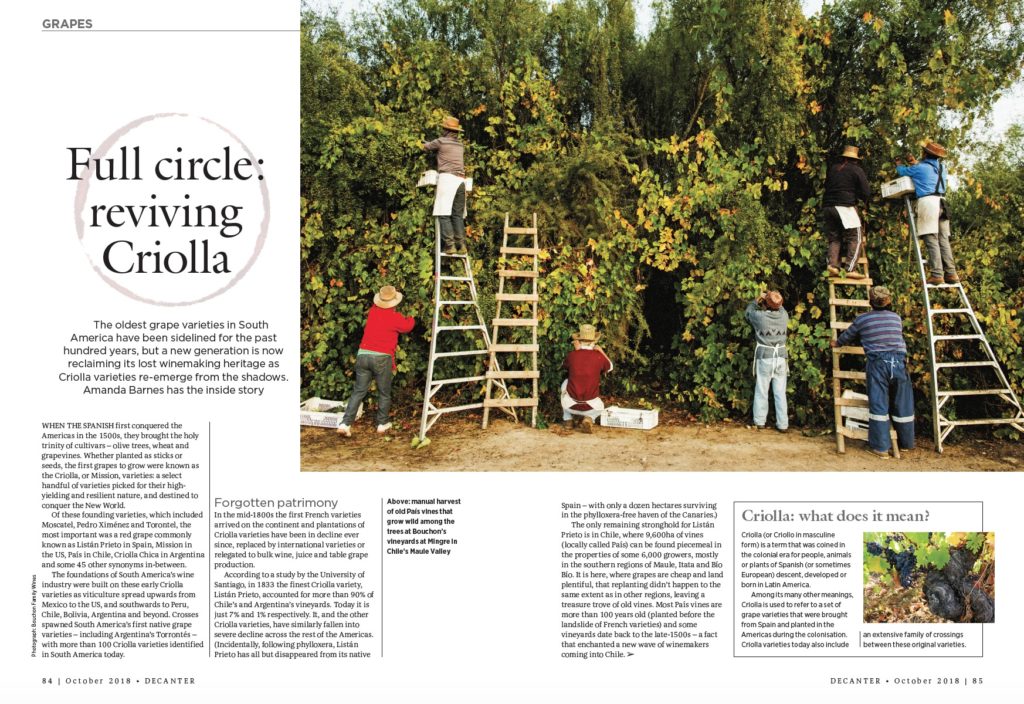Decanter: South America’s winemakers take flight

Winemakers in South America are embarking on a new era – one of quiet self-confidence and curious self-discovery, bringing forth some of the most exciting and individual wines yet. Distinctive regional personality is at the core of this new movement and it highlights a strong departure from the varietal – and style-driven wines that dominated […]
Decanter: South American Chardonnay Tasting

The wine-producing countries of Chile, Argentina and Uruguay are making some seriously exciting wines, so we asked regional expert Amanda Barnes to blind taste a line-up of premium Chardonnays. Quality is higher than ever, she says, with balanced wines in myriad styles waiting to be discovered. Only in the last decade has South American Chardonnay […]
Patagonia: South America’s new frontier. Decanter 2019

Written for Decanter Magazine, October 2019 In the last decade, winemakers in Chile and Argentina have moved beyond what was seen as the final frontier for South American viticulture — into the cool climates and wild terrains of Patagonia. Growing confidence and expertise; a quest for lower temperatures and greater water availability in the face […]
Decanter Interview: Pablo Morande, Father & Son

Published in Decanter Magazine, July 2019 The name Morandé is synonymous with the Casablanca Valley in Chile, where pioneering winemaker Pablo Morandé has joined forces with his son, Pablo Jr, to recreate, reinvent and rediscover wines from the country’s past. Amanda Barnes interviews them (PDF Pablo Morande Interview). Pablo Morande is a man with an […]
Maipo Valley guide for Wine Enthusiast

Written for Wine Enthusiast, February 2019 With massive Andean peaks forming the visual backdrop, the Maipo Valley ranks as one of Chile’s most picturesque spots. It’s also home to some of the country’s top wines. Cabernet Sauvignon is king here, with alluvial flows, a persistently sunny climate and cool evenings creating the ideal breeding ground […]
The ‘Criolla’ wine revival: a taste of South American wine history

The oldest grape varieties in South America have been sidelined for the past hundred years, but a new generation is now reclaiming its lost winemaking heritage as Criolla varieties re-emerge from the shadows. Amanda Barnes has the inside story… Published in Decanter Magazine, October 2018 When the Spanish first conquered the Americas in the 1500s, […]
Chile Vintage 2018 Report

Timing of the harvest was back to normal, a relief following the hot and early harvest of 2017, and maturation periods were steady without any extreme events. ‘We had a cold and wet winter,’ De Martino winemaker Eduardo Jordan told Decanter.com, who produces wine around the country. ‘A warm spring brought excellent bud break. The moderate and […]
Get to know the new DOs in Chile

The creation of four new appellations in Chile was officially announced in May 2018, following publication in the Official Journal of the Republic of Chile, a periodical that formalizes the country’s new laws. Lo Abarca, Licantén, Apalta, and Los Lingues are now recognized as denominaciónes de origen (DOs), and as such, their names can be displayed on the […]
Hotting up in Chile

It is telling that most Chileans take their title as a “good-value” wine producer to be a burdensome insinuation that their wines are pedestrian and dull. But that assumption couldn’t be further from the truth with the exciting wine scene in Chile today. Wine producers are tireless in their quest to conquer the far extremes of Chile […]
Wine festivals in South America

South Americans know how to throw a party, and almost before the first grape has been picked, the harvest is being celebrated with wine festivals across the Southern Cone. Traditionally the fiesta de vendimia (harvest festival) was a small celebration in the villages to celebrate the end of the harvest and a good vintage – […]

